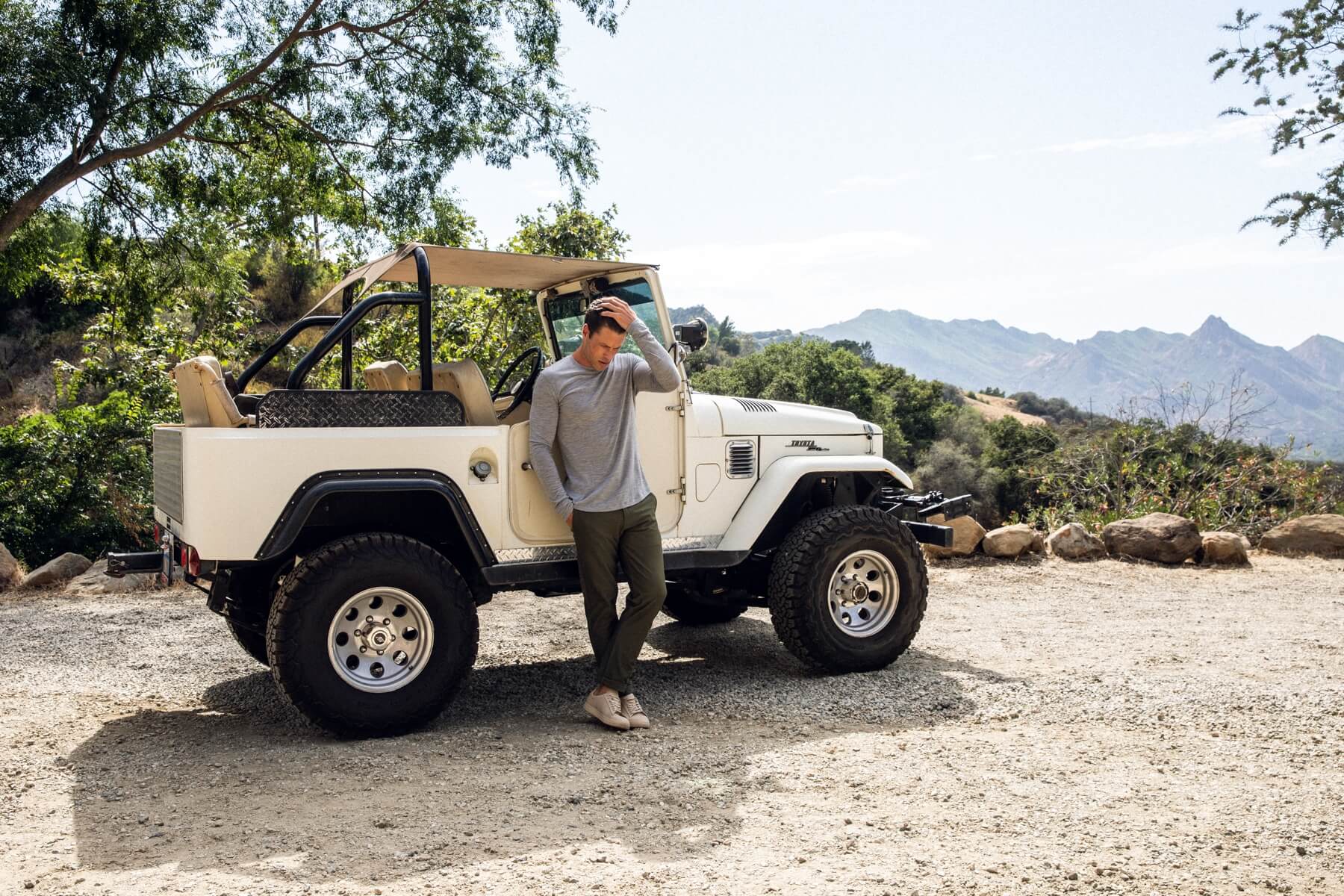Adventure wear clothing has emerged as a vital gear for outdoor enthusiasts, offering a unique blend of durability, comfort, and style. Whether you’re scaling mountains, navigating rugged trails, or simply seeking comfort in the great outdoors, this specialized attire empowers you to embrace every adventure with confidence.
In this comprehensive guide, we delve into the world of adventure wear clothing, exploring its key features, types, and considerations. We’ll also discuss ethical and environmental aspects, as well as emerging trends and innovations that shape this dynamic industry.
Overview of Adventure Wear Clothing
Adventure wear clothing is specifically designed to provide comfort, protection, and functionality for individuals engaging in outdoor activities such as hiking, camping, climbing, and other adventure sports. These garments are engineered to withstand various environmental conditions and offer features that enhance the wearer’s experience.
Adventure wear clothing typically incorporates breathable and moisture-wicking fabrics to regulate body temperature and keep the wearer dry during strenuous activities. They often include durable materials that resist wear and tear, as well as reinforcements in key areas to prevent rips and tears.
Additionally, adventure wear clothing often features pockets and compartments for storing essential gear, and reflective elements for increased visibility in low-light conditions.
Suitable Activities for Adventure Wear Clothing
- Hiking
- Camping
- Climbing
- Trekking
- Backpacking
- Trail running
- Mountaineering
- Skiing
- Snowboarding
- Kayaking
- Fishing
Key Features of Adventure Wear Clothing

Adventure wear clothing is designed to provide comfort, protection, and functionality in challenging outdoor environments. Key features include:
- Durability:Adventure wear is made from robust materials that can withstand abrasion, tearing, and other forms of wear and tear.
- Breathability:Moisture-wicking fabrics allow sweat to evaporate, keeping the wearer dry and comfortable.
- Weather resistance:Waterproof and windproof materials protect against rain, snow, and cold temperatures.
Materials Commonly Used in Adventure Wear Clothing
Common materials used in adventure wear clothing include:
- Nylon:Durable, lightweight, and moisture-wicking.
- Polyester:Synthetic, quick-drying, and wrinkle-resistant.
- Gore-Tex:Waterproof, breathable, and windproof membrane.
Types of Adventure Wear Clothing
Adventure wear clothing encompasses a diverse range of garments designed to enhance the outdoor experience. Each type serves a specific purpose and incorporates unique features to cater to the challenges and demands of various adventure activities.
Hiking Pants
Hiking pants are designed for comfort and durability during extended treks. They typically feature:
- Moisture-wicking and breathable fabrics to regulate body temperature
- Articulated knees for enhanced mobility
- Multiple pockets for storage and convenience
- Reinforced fabrics in high-wear areas for durability
Technical Jackets
Technical jackets are essential for protection against the elements. They offer:
- Waterproof and breathable membranes to keep adventurers dry and comfortable
- Insulation or layering options for warmth and versatility
- Adjustable hoods and cuffs to minimize wind and moisture entry
- Abrasion-resistant materials for durability in challenging conditions
Base Layers
Base layers are the foundation of an adventure wear system. They:
- Wick away moisture and regulate body temperature
- Provide insulation against cold weather
- Minimize chafing and discomfort
- Come in a variety of materials, including merino wool, synthetic fabrics, and blends
Considerations for Choosing Adventure Wear Clothing

Selecting the right adventure wear clothing is crucial for a comfortable and enjoyable experience. Several factors should be taken into account, including fit, comfort, and the specific activity requirements.
Proper fit is essential for both comfort and functionality. Clothing that is too tight can restrict movement and cause discomfort, while loose clothing can get caught on branches or other obstacles. It’s important to try on clothing before purchasing to ensure a snug but not constricting fit.
Comfort
Comfort is paramount when choosing adventure wear clothing. Materials should be breathable and moisture-wicking to keep you cool and dry during strenuous activities. Soft and non-abrasive fabrics will prevent chafing and irritation, even after extended wear.
Specific Activity Requirements
Consider the specific activities you’ll be engaging in when choosing adventure wear clothing. For example, if you’ll be hiking in cold weather, you’ll need layers that provide insulation and protection from the elements. If you’ll be mountain biking, you’ll need clothing that is durable and flexible.
Weather Conditions, Adventure wear clothing
The weather conditions you’ll be facing will also influence your clothing choices. For warm weather, lightweight and breathable fabrics are ideal. For cold weather, layers are key to trap heat and provide insulation. Waterproof and windproof materials are essential for protection against rain and wind.
5. Brands and Styles of Adventure Wear Clothing
Adventure wear clothing has become increasingly popular in recent years, with a wide range of brands and styles available to suit different activities and preferences.
Some of the most popular brands of adventure wear clothing include Patagonia, The North Face, Arc’teryx, and Columbia. These brands offer a variety of clothing items designed for different activities, such as hiking, camping, climbing, and skiing.
Styles of Adventure Wear Clothing
Adventure wear clothing comes in a variety of styles, from classic to modern. Some of the most popular styles include:
- Classic: Classic adventure wear clothing is typically made from durable materials such as cotton or nylon, and features simple designs. This type of clothing is often preferred by hikers and campers who value functionality over style.
- Modern: Modern adventure wear clothing is often made from synthetic materials such as polyester or spandex, and features more stylish designs. This type of clothing is often preferred by climbers and skiers who want to look good while they’re out on the trail.
- Technical: Technical adventure wear clothing is designed for specific activities, such as climbing or skiing. This type of clothing is typically made from high-performance materials that are designed to keep you warm, dry, and protected from the elements.
Care and Maintenance of Adventure Wear Clothing

Proper care and maintenance are crucial to extend the lifespan of adventure wear clothing and ensure its performance in various conditions. Here are some essential techniques to follow:
Washing
- Read the care labels carefully for specific washing instructions.
- Use cold water to preserve the fabric’s integrity and prevent fading.
- Use a mild detergent formulated for technical fabrics.
- Avoid using bleach or fabric softeners, as they can damage the fibers.
- Consider hand-washing delicate items or those with waterproof membranes.
Drying
- Air-dry adventure wear clothing whenever possible to prevent shrinkage and damage.
- If using a dryer, select a low heat setting and remove items as soon as they are dry.
- Avoid ironing or exposing the clothing to high heat, as this can weaken the fibers.
Storing
- Store adventure wear clothing in a cool, dry place away from direct sunlight.
- Hang items on a hanger or fold them loosely to prevent wrinkles.
- Consider using mothballs or cedar blocks to deter insects.
By following these care and maintenance guidelines, you can keep your adventure wear clothing in optimal condition and ensure its performance for many adventures to come.
Ethical and Environmental Considerations
Adventure wear clothing production has ethical and environmental implications that warrant attention. Sustainable practices and eco-friendly materials play a crucial role in minimizing the industry’s environmental footprint.
Sustainable Practices
- Ethical sourcing:Ensuring materials are obtained from responsible suppliers who prioritize fair labor practices and animal welfare.
- Waste reduction:Employing innovative techniques to minimize waste throughout the production process, such as using recycled fabrics and reducing packaging.
- Energy efficiency:Optimizing energy consumption in manufacturing facilities and adopting renewable energy sources.
Eco-Friendly Materials
- Organic fabrics:Using natural fibers like organic cotton, hemp, and bamboo, which are grown without harmful pesticides and fertilizers.
- Recycled materials:Incorporating post-consumer and post-industrial recycled materials to reduce waste and conserve resources.
- Biodegradable materials:Utilizing materials that can naturally decompose, minimizing environmental impact at the end of the product’s lifespan.
Ethical and environmental considerations are becoming increasingly important in the adventure wear clothing industry. Consumers are demanding sustainable and eco-friendly products, driving manufacturers to adopt responsible practices and materials.
Trends and Innovations in Adventure Wear Clothing
The adventure wear clothing industry is constantly evolving, with new trends and innovations emerging all the time. These innovations are driven by the need for clothing that is both functional and stylish, and that can withstand the rigors of outdoor activities.
One of the most significant trends in adventure wear clothing is the use of new technologies and materials to enhance performance and comfort. For example, many adventure wear garments are now made with moisture-wicking fabrics that help to keep the wearer dry and comfortable, even during strenuous activity.
Other garments are made with breathable materials that allow air to circulate, helping to prevent the wearer from overheating.
New Technologies and Materials
- Moisture-wicking fabrics: These fabrics are designed to draw sweat away from the body, keeping the wearer dry and comfortable.
- Breathable materials: These materials allow air to circulate, helping to prevent the wearer from overheating.
- Insulating materials: These materials help to trap heat, keeping the wearer warm in cold weather.
- Durable materials: These materials are designed to withstand the rigors of outdoor activities, such as abrasion and tearing.
Closing Notes: Adventure Wear Clothing
As we conclude our exploration of adventure wear clothing, it’s evident that this specialized gear is not merely a wardrobe choice but an essential companion for outdoor adventures. Its ability to enhance performance, comfort, and safety makes it an invaluable asset for anyone seeking to make the most of their time spent in nature.
Embrace the spirit of adventure, equip yourself with the right clothing, and embark on unforgettable journeys that will leave lasting memories.
Answers to Common Questions
What are the key features to look for in adventure wear clothing?
Durability, breathability, weather resistance, moisture-wicking, and comfort are essential features to consider.
How do I choose the right adventure wear clothing for my specific needs?
Consider the type of activity, weather conditions, fit, and comfort level when selecting adventure wear clothing.
What are some popular brands of adventure wear clothing?
The North Face, Patagonia, Arc’teryx, Columbia, and REI are reputable brands that offer a wide range of adventure wear clothing options.